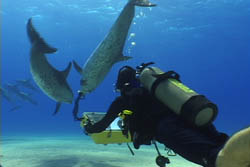Friday, September 6, 2013
Message from the Southern Resident Orcas
By Jeff Friedman (@orcawild)
I just returned from a week on San Juan Island and we really lucked out with some incredible orca sightings. We spent an awesome afternoon watching several groups of Biggs (transients), including the T036s, hunting harbor porpoises. We didn’t see an actual kill, but we were pretty sure we saw a few of them eating after a lot of quick direction changes followed by some serious thrashing. Afterwards we were treated to some incredible spy hops that really seemed to be them checking us out.
And we were extremely fortunate to see a superpod of resident orcas from all three (J, K and L) pods three different times. In past summers it would be typical to see the resident orcas frequently, but this summer they have spent less time, by far, in their familiar inland waters than at any time since at least the mid-1970’s when sightings data began to be recorded. They have been absent this summer for weeks at a time, so 3 sightings in one week was extremely lucky.
Our first encounter with the residents, on August 22nd, included a full blown superpod with everyone from all three pods mixed into multiple groups as they traveled in from the Pacific to the west side of San Juan Island. It was breathtaking to see the groups spread out, all within our field of view, from a few hundred yards away out toward the horizon. Knowing how little they have been seen this year, it was sweet seeing so many orcas at one time. But within an hour of reaching San Juan Island they turned around and headed back out to open ocean.
A few days later, on August 25th, they came back in and we saw them heading north along the west side of San Juan Island and later on coming out of Active Pass into the Strait of Georgia in B.C., heading toward the Fraser River, their favorite source of Chinook salmon. It was amazing to see them come out of the pass seemingly very excited, with a ton of tail slaps, too many breaches to count, and a lot of porpoising. Similar to a few days earlier, they spent a very short time, and by nightfall they were headed out to the open ocean again. There have been no resident orca sightings since.
Speaking with whale watch operators, naturalists and locals on the island there is definitely concern over the infrequent sightings of the southern residents and their brief stays when they do appear, as well as hope the orcas are finding enough Chinook in the open ocean. Based on their behavior, it seems logical to assume they are not getting enough food in the inland waters, especially their preferred Fraser River Chinook. Some people are saying there are Chinook returning to the Fraser River, some are saying the numbers are dreadful, so it is hard to really know.
But overall, the Fraser Chinook are in decline and this is known. The two likely culprits are commercial fishing and disease spreading from fish farms to wild salmon populations. The final 2 days of the trip saw the opening of commercial fishing. They are fishing for pinks, which the orcas do not eat, and fishermen are supposed to return any Chinook taken as bycatch. But no one believes they actually do this. I took photos of purse seiners dropping their nets next to the resident orcas as they were foraging, and we saw numerous seiners all over the inland waters. They were lined up 3 and 4 at a time across Haro Strait.
I think there is a message in the orcas pattern of absence this summer: Restore and protect the salmon runs that sustain them (and numerous other species including us) or they will go somewhere else to find food (hopefully). This impacts the economy and culture of the Pacific Northwest. Images of orcas are ingrained everywhere in the region, from Seattle through British Columbia. The orcas are part of the region’s identity.
In addition to being a cultural icon they are a big driver of tourism. Business as usual with the salmon returns also impacts commercial and sport fishing and all other marine mammals that feed on the salmon. Losing a resource that should be “easy” to manage will have devastating consequences to the people of the area. The orcas may adapt and just leave for a new preferred food source, and what we are seeing this summer could be the beginning of that.
Or they may not adapt, which makes this summer even more concerning. As Ken Balcomb, Director of the Center for Whale Research, noted in a recent blog:
“We have demonstrated that the “resident” Orca survival is significantly linked to Chinook abundance, and the government managers on both sides of the US/Canada border should take more notice of this inconvenient truth before it is too late. This year (2013) during the summer when whale-watching is historically best, we have witnessed an unprecedented absence of “residents” around the San Juan Islands, and a continuing downtrend in their population number concurrent with a near collapse of Fraser River Chinook.”
This summer leaves us with more questions than answers. Are the resident orcas finding enough food elsewhere? Will they adapt to a new food source and abandon the Fraser River and surrounding inland waters? Will the US and Canadian governments do what is needed to restore the Fraser River salmon populations?
Time will tell if this summer is a message from the resident orcas and if all the stakeholders in the region can work together to mobilize US and Canadian government action to save the Fraser River salmon.
Subscribe to:
Post Comments (Atom)





No comments:
Post a Comment